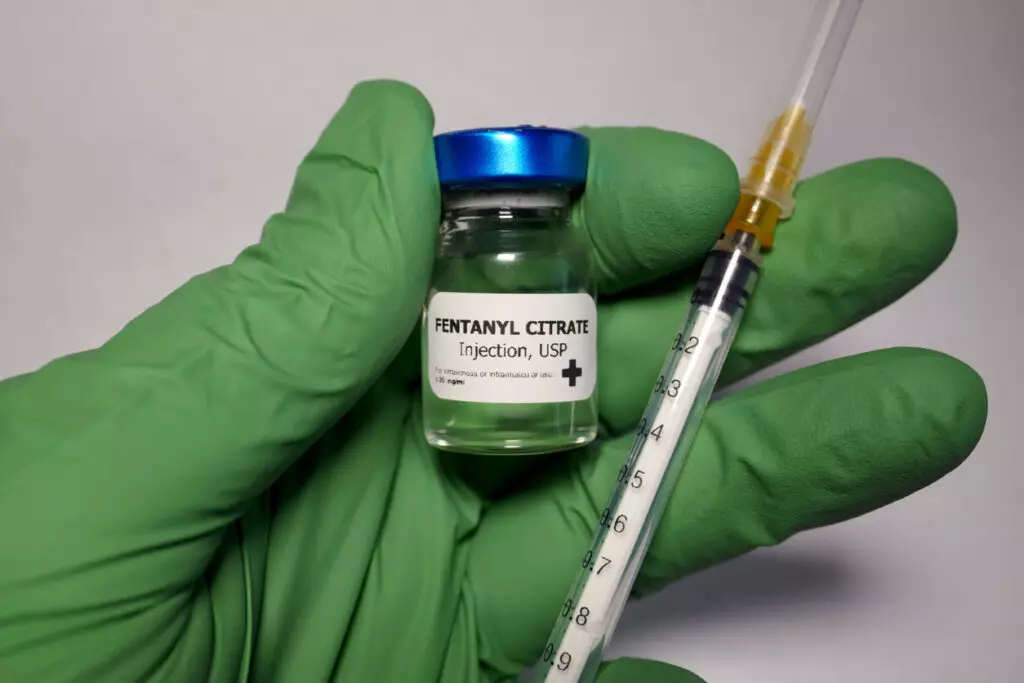Fentanyl isn’t in the news as frequently as heroin and other opiates, but don’t discount its deadly potential. The opioid epidemic continues to devastate families across the nation, with no sign of slowing any time soon. The CDC reports that fentanyl is primarily responsible for the dramatic increase in fatal overdoses.
If you’re concerned about your use of fentanyl, or if you’re worried about a loved one, it’s essential to seek fentanyl treatment as soon as possible. Don’t be tempted to stop on your own, which is risky and isn’t likely to be successful.
What is Fentanyl?
Unlike heroin, made from opium poppies, fentanyl is a synthetic opioid manufactured in laboratories. The effect on your brain is no different than heroin or opioid drugs, but this hazardous substance is 50 times more potent than heroin and 70 to 100 times stronger than morphine.
Pharmaceutical fentanyl is a legitimate medication that physicians have prescribed since the 1960s to relieve severe pain. It is available in several forms, including injectable, lozenges, patches, or under the tongue.
Unfortunately, illegal fentanyl is cheap and easy to make from chemicals sold by suppliers based in China. It is also distributed by a couple of large, Mexican-based cartels. According to the DEA (Drug Enforcement Administration), Mexican Transnational Criminal Organizations are the most significant criminal drug threat in the United States.
Users know illegal fentanyl by various names, including China White, China Girl, Tango and Cash, Pink, Murder 8, Dance Fever, He-Man, Great Bear, Poison, Friend, Goodfellas, or Jackpot. It is sold in powder form, mixed with heroin, or as a liquid in nasal spray, on blotter paper, or in eye drops. Some labs manufacture tablets that look exactly like less potent drugs.
Signs of Fentanyl Addiction
Nobody sets out to get addicted, but once your body and brain become dependent on the substance, it’s difficult to stop. Many people start by taking OxyContin, Percocet, or other painkillers prescribed by a doctor. When the pills are gone, and doctors refuse to prescribe more, street drugs are the next step.
The problem is that all too often, people don’t realize they’re taking fentanyl because it’s mixed into other drugs, including heroin, cocaine, or meth. This tactic allows dealers to make more money, but the risk to the user is substantial.
A person who is addicted to fentanyl continues to use the drug even when it’s causing severe physical or mental problems, difficulties at home, work, school, or even life-threatening situations. Fulfilling primary life responsibilities becomes difficult or impossible.
You may notice that a person using fentanyl is giving up important or enjoyable activities. She may try to stop or cut down with little or no success. Much of her time and energy is spent finding, using, or recovering from using fentanyl.
Other signs of fentanyl abuse and addiction may include:
- Tolerance, in which the user requires higher amounts to attain the same “high”
- Euphoria
- Confusion or difficulty concentrating
- Elevated mood
- anxiety, or depression
- Stomach and intestinal discomfort, including nausea, vomiting, cramping, and constipation
- Low blood pressure
- Sleepiness or extreme fatigue
- Swollen hands and feet
- Muscle stiffness
- Slurred speech
- Itching
- Dizziness
- Weight loss
- Poor hygiene
- Increased heart rate
- Breathing problems
- Suicidal thoughts
Signs Someone Is Overdosing on Fentanyl
If you think someone is having a fentanyl overdose, call 911 immediately; fentanyl suppresses breathing, which can lead to death very quickly. Don’t hesitate, as every minute counts, and don’t worry about getting yourself into legal trouble by calling for help. Most states have Good Samaritan laws that protect people who help another person in a life and death situation.
The three primary symptoms of overdose are:
- Small (“pinpoint”) pupils
- Loss of consciousness
- Slow, shallow, or stopped breathing
More signs of a possible overdose include:
- Dizziness
- Sleepiness or loss of consciousness
- Pale, cold skin or blue fingernails or lips
- Choking or gurgling sounds
Fentanyl Detox and Withdrawal
Fentanyl detox, the process where the drug leaves your body, is the first step to recovery and takes place before fentanyl rehab begins. Depending on the severity of your addiction, detox may take place at a treatment center or specialized detox clinic.
Fentanyl withdrawal symptoms typically kick in 18 to 24 hours after the last time you use fentanyl. You may experience some of the following:
- Severe cravings
- Diarrhea, nausea, and vomiting
- Sleep problems
- Bone and muscle pain
- Uncontrollable leg movements
- Flu-like symptoms (chills, goosebumps, hot flashes)
- Yawning
- Runny nose and eyes
- Anxiety and depression
The thought of withdrawal may discourage you from seeking treatment, but you’ll be monitored around the clock to ensure you’re detoxing safely until the toxins leave your body. If necessary, a doctor will prescribe medications to regulate your body temperature, heart rate, and blood pressure.
Also, you’ll receive meds to relieve difficult symptoms and ensure you’re as comfortable as possible. You may receive antidepressants or antianxiety medications.
Your doctor may recommend that you stop using fentanyl gradually, reducing your use by a small amount every day. She may prescribe a weaker type of opioid while you taper off. You may taper off fentanyl quickly, or very slowly.
Don’t Detox Alone
Detoxing “cold turkey” is dangerous, and without treatment, it isn’t likely to be effective. It’s nearly impossible to kick powerful drugs like fentanyl without help.
Keep in mind that if you use fentanyl after detoxing, the chance of overdose is high because your body has lost tolerance. Once your body has readjusted to the absence of the drug, your usual dose is likely to be fatal.
Treatment for Fentanyl Addiction
Treatment for fentanyl addiction isn’t a walk in the park, but it’s essential and may save your life. These days, most treatment centers use a combination of behavioral counseling and medication — usually methadone or buprenorphine, which block the “high” and minimize the painful symptoms of withdrawal. You may take the meds for a short time, or a maintenance dose that will help you stay clean for the long term.
The Road to Recovery
Looking for a fentanyl rehab facility you can trust to get you back on your feet?
At First Step Behavioral Health, our compassionate, experienced treatment professionals are ready to help you take that all-important first step to a happier, healthier, drug-free life. Just pick up the phone and give us a call at 855-425-4843, or contact us online.
Jump to a Section
Call (855) 425-4846
